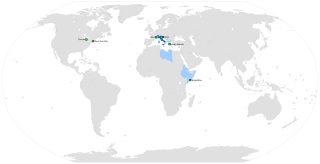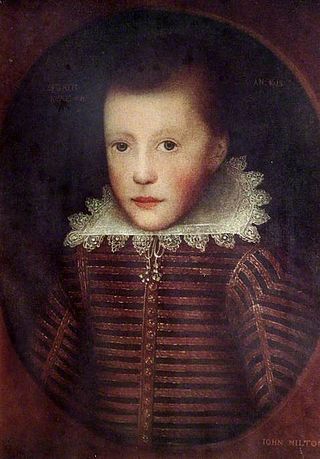Related Research Articles

An academy is an institution of secondary or tertiary higher learning. The name traces back to Plato's school of philosophy, founded approximately 386 BC at Akademia, a sanctuary of Athena, the goddess of wisdom and skill, north of Athens, Greece.

The Accademia della Crusca, generally abbreviated as La Crusca, is a Florence-based society of scholars of Italian linguistics and philology. It is one of the most important research institutions of the Italian language, as well as the oldest linguistic academy in the world.

The Gallerie dell'Accademia is a museum gallery of pre-19th-century art in Venice, northern Italy. It is housed in the Scuola della Carità on the south bank of the Grand Canal, within the sestiere of Dorsoduro. It was originally the gallery of the Accademia di Belle Arti di Venezia, the art academy of Venice, from which it became independent in 1879, and for which the Ponte dell'Accademia and the Accademia boat landing station for the vaporetto water bus are named. The two institutions remained in the same building until 2004, when the art school moved to the Ospedale degli Incurabili.
The Accademia degli Arcadi or Accademia dell'Arcadia, "Academy of Arcadia" or "Academy of the Arcadians", was an Italian literary academy founded in Rome in 1690. The full Italian official name was Pontificia Accademia degli Arcadi.
Roman academies refers to associations of learned individuals and not institutes for instruction.

Leopoldo de' Medici was an Italian cardinal, scholar, patron of the arts and Governor of Siena. He was the brother of Ferdinando II de' Medici, Grand Duke of Tuscany.

The Accademia di Belle Arti di Bologna is a public tertiary academy of fine art in Bologna, in Emilia-Romagna in northern Italy. It has a campus in Cesena.

The Accademia di Belle Arti di Venezia is a public tertiary academy of art in Venice, Italy.
Jacopo Gaddi was an Italian Neo-Latin and Italian writer from Florence.

John Milton wrote poetry during the English Renaissance. He was born on 9 December 1608 to John and Sara Milton. Only three of their children survived infancy. Anne was the oldest, John was the middle child, and Christopher was the youngest.

The Accademia delle Arti del Disegno is an academy of artists in Florence, in Italy. It was founded on 13 January 1563 by Cosimo I de' Medici, under the influence of Giorgio Vasari. It was initially known as the Accademia e Compagnia delle Arti del Disegno. It was made up of two parts: the company was a kind of guild for all working artists, while the academy was for more eminent artistic figures of the Medici court, and supervised artistic production in the Duchy of Florence.

The Academy of Sciences of the Institute of Bologna is an academic society in Bologna, Italy, that was founded in 1690 and prospered in the Age of Enlightenment. Today it is closely associated with the University of Bologna.

Carlo Roberto Dati was a Florentine nobleman, philologist and scientist, a disciple of Galileo (1564-1642) and, in his youth, an acquaintance of Evangelista Torricelli (1608-1647).

The Accademia degli Umoristi founded in 1603 was a learned society of intellectuals, mainly noblemen, that significantly influenced the cultural life of 17th century Rome. It was briefly revived in the first half of the eighteenth century by Pope Clement XI.
Maria Luisa Cicci was an Italian woman of letters and 18th century poet, a member of a member of the literary-scholarly societies (academies) of Arcadians of Pisa and Intronati of Siena; she was a prominent sponsor of literary salons in Pisa.
The Accademia degli Apatisti was a scholarly society founded in Florence in 1632 and associated with the Studio Fiorentino. Together with the Accademia degli Umidi and the Accademia della Crusca it was one of Florence’s dominant literary academies of the XVII century.
Agostino Coltellini was an Italian writer and intellectual, known as a scholar of Dante and the Tuscan language. Coltellini was the founder of the Accademia degli Apatisti and one of the men Milton names in the Defensio Secunda.

The Accademia degli Oziosi was the most famous Neapolitan literary academies of the Renaissance.

Francesco Rondinelli was a Florentine scholar and academic of the Seicento.
References
- 1 2 Fabio Tarzia (1998). GADDI, Jacopo (in Italian). Dizionario Biografico degli Italiani, Volume 51. Istituto della Enciclopedia Italiana. Accessed August 2014.
- ↑ Estelle Haan (1998). From Academia to Amicitia: Milton's Latin Writings and the Italian Academies. Transactions of the American Philosophical Society New Series 88 (6): i-x+1-208. doi:10.2307/1006662 (subscription required)